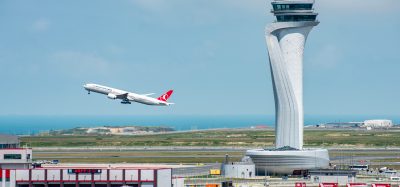Flying forward in Latin America and the Caribbean Airports: Voice of the Industry
- Like
- Digg
- Del
- Tumblr
- VKontakte
- Buffer
- Love This
- Odnoklassniki
- Meneame
- Blogger
- Amazon
- Yahoo Mail
- Gmail
- AOL
- Newsvine
- HackerNews
- Evernote
- MySpace
- Mail.ru
- Viadeo
- Line
- Comments
- Yummly
- SMS
- Viber
- Telegram
- Subscribe
- Skype
- Facebook Messenger
- Kakao
- LiveJournal
- Yammer
- Edgar
- Fintel
- Mix
- Instapaper
- Copy Link
Posted: 3 November 2023 | International Airport Review | No comments yet
Rafael Echevarne, Director General of ACI Latin America Caribbean, wrote this exclusive article for International Airport Review’s “The Americas” Issue 3. Here, he spoke about his region’s recovery, challenges, growth and future opportunities.


Flying forward in Latin America and the Caribbean Airports
Latin America and the Caribbean (LAC) has seen an impressive recovery post-pandemic; however, challenges persist. Airports in the region face infrastructure strain, environmental impact concerns, yet they also hold opportunities for tourism growth and becoming vital air cargo hubs. Finding a balance is essential for sustainable success.
Airports in Latin America and the Caribbean have undergone significant transformations over the past few decades. As the region continues to experience economic growth and increased tourism, its airports have become vital gateways to the world. Some critical developments airports in the region have faced are upgrading and expanding their infrastructure.
Recovery in LAC
In June 2023, Latin American airports experienced a significant traffic recovery compared to June 2019, with passenger numbers surging by 8.1%. This remarkable rebound is a positive sign for the region’s aviation industry, indicating a hopeful return to normalcy in the post-pandemic era.
The cumulative traffic data for the first semester (January to June) of 2023 also reflects the resilience and adaptability of LAC airports, with a growth rate of 5.8% compared to the same period in 2019.
Among the countries leading the recovery, Mexico stood out with an impressive growth rate of 19% in the first semester of 2023 compared to 2019. Following closely behind were Colombia with 16% and the Dominican Republic with 12%.
On the other hand, some countries showed slower progress in their traffic recovery. Uruguay experienced a decline of 19%, while Perú and Chile witnessed reductions of 15% and 11%, respectively.
Brazil, although still below its 2019 traffic levels by 5% in the first semester of 2023, showed signs of improvement, with a 4% increase in June 2023 compared to June 2019.
This data highlights the varying degrees of recovery among different Latin American countries’ airports and showcases the resilience of the region’s aviation sector in adapting to the challenges posed by the pandemic.
Key developments
Furthermore, the aviation industry worldwide has witnessed substantial technological advancements, and LAC airports are no exception. Integrating biometrics, artificial intelligence, and automation has streamlined airport operations, leading to shorter check‑in times, improved security, and better baggage handling. Montevideo International Airport is an excellent example of technology integration, with its facial recognition system at boarding gates. Adopting these innovations has boosted the region’s competitiveness in the global aviation market.
Airports’ challenges
Latin American and Caribbean airports have been facing infrastructure and environmental sustainability challenges. However, many regional airports have started addressing this issue through sustainable practices and implementing carbon offset programmes, such as the Airport Carbon Accreditation (ACA).
ACI’s Airport Carbon Accreditation (ACA) is the only carbon mapping and management standard designed for the airport industry. The number of participants in the Airport Carbon Accreditation programme has been consistently increasing despite the pandemic because of the programme’s ability to help airports reduce carbon footprints and gain public recognition.
To date, 400 airports worldwide, including 71 in Latin America and the Caribbean, have been accredited. LAC is, behind Europe, the most active region in the ACA programme. These 71 airports handle 47% of the region’s air passengers.
CAPEX
The historic growth of LAC air passengers and cargo increased by 25% between 2010 and 2017, putting significant pressure on airport infrastructure. Many LAC countries have focused on expanding and modernising existing airport assets, adding terminal capacity, expanding aircraft aprons, and runway expansions– predominately in significant cities. This expansion raises concerns about several LAC countries’ ability to adequately address future air transport demand– given the lack of space for construction or development as urban sprawl has gradually surrounded airports, reducing natural growth spaces. ACI estimated airport CAPEX needs in LAC of USD 93.5 billion between 2021 and 2040.
LAC countries primarily have focused historic airport CAPEX on improving and expanding existing airport infrastructure. The short- and medium-run outlook suggests that this strategy to addressing capacity demand will continue, while long‑run greenfield CAPEX will begin picking up speed in the 2030s.
Greenfield CAPEX forecasts indicate that approximately US$41.4 billion will be invested between 2021 and 2040 to address medium- and long-run capacity needs. This investment represents about 44% of the CAPEX investment over this period, with the share of greenfield projects increasing from 16% of total CAPEX investment in 2021 to 53% in 2040.
Aviation growth interconnects with economic growth and prosperity. Failure to meet future capacity needs through the airport, capital investment risks medium- and long-run GDP, and job growth across LAC. The emissions implications of failing to meet the sustainability investment needed to decarbonise airport operations also risk falling short of achieving a net zero target by 2050.
Given that forecasts indicate that LAC countries will focus on expanding existing airport assets, there will be an even higher need for investment in sustainability and carbon reductions to reach and sustain net zero emissions.
A shortage of future airport CAPEX resulting in unrealised passenger growth would have cascading economic effects in LAC—especially LAC economies that depend more on tourism and recreation.
Opportunities for growth
Latin America and the Caribbean airports have essential opportunities, such as boosting tourism and air cargo. These provide unique opportunities for airports to supply rising visitors, stimulate local economies, and foster sustainable development.
Latin America and the Caribbean airports have emerged as crucial players in the region’s economic growth and international connectivity. While they face environmental concerns, these airports have also embraced vital developments and opportunities in infrastructure upgrades, technology integration, regional connectivity, and tourism growth. Moreover, their commitment to sustainability through the airport.
Carbon Accreditation reflects a promising step towards reducing their environmental impact and fostering a greener aviation industry in the LAC region. As they continue to evolve, LAC airports hold the potential to become significant drivers of progress and prosperity in the region.


Rafael holds a PhD in Air Transport Economics from Cranfield University, UK.
Issue
Related topics
Airport development, Airside operations, Operational efficiency, Sustainability
Related airports
Related organisations
Airports Council International Latin America & Caribbean (ACI-LAC)


















